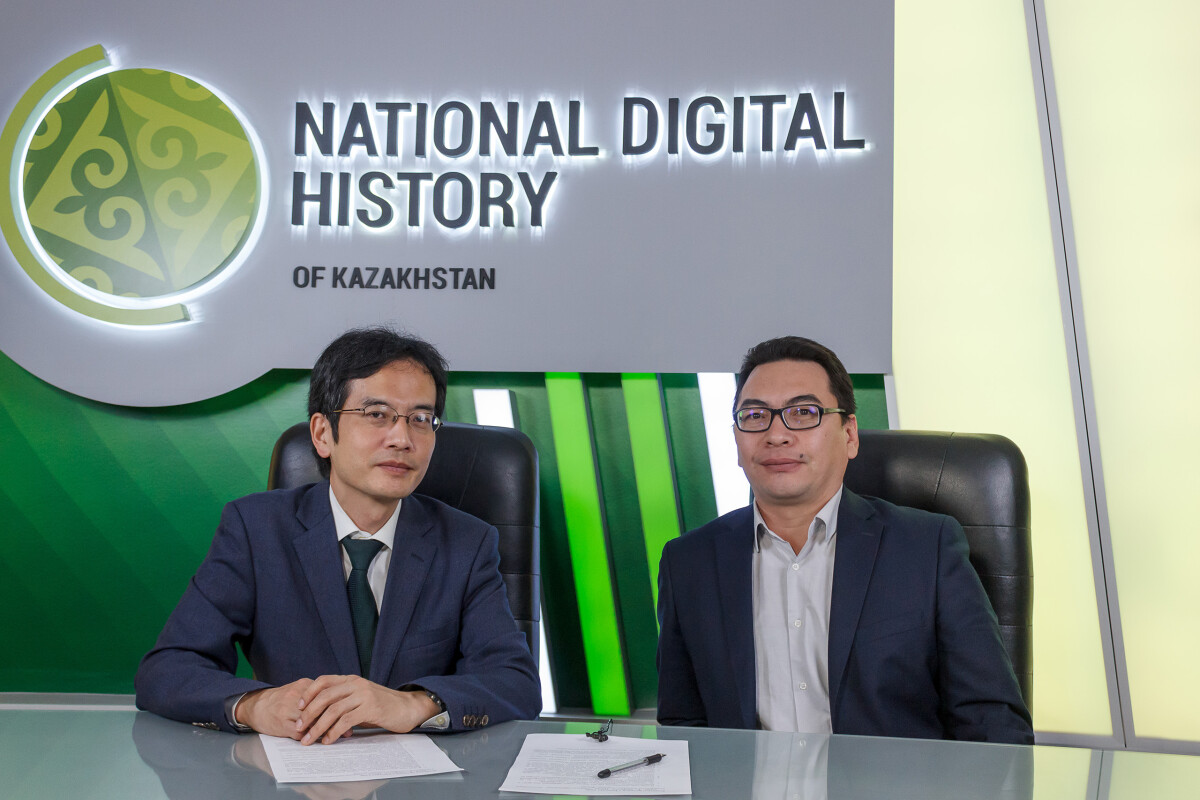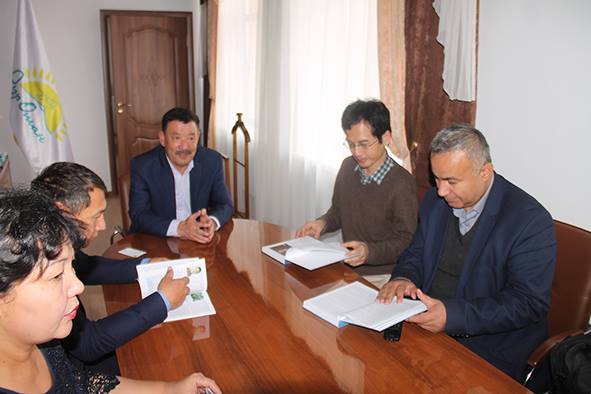
On the eve of a major anniversary event - the 100th anniversary of the October Socialist Revolution, guest of the NDH portal was Professor Tomohiko Uyama of the Center for Slavic and Eurasian Studies of the University of Hokkaido, Sapporo, Japan.
- We are very pleased with your visit to Kazakhstan, but this is not your first visit to Kazakhstan.
- Yes, of course, I have been in Kazakhstan many times.
- Surely this visit is connected with the 100th anniversary of the Alash movement?
- Yes, several scientific events took place. In Uralsk, there was a conference on the history of Alash, and then we participated in a round table held in Orenburg and the Eurasian National University named after L.N. Gumilyov in Astana hosted a round table dedicated to the 100th anniversary of Alash.

- Foreign scientists are not often interested in the history of Kazakhstan, which is so remote for many countries. Everyone comes to this in their own way - someone likes the language, someone likes culture, songs or history. How did you come to the history of Kazakhstan?
- When I entered the university, I was interested in the history and culture of Europe, the literature of France, Russia, and the history of Ancient Rome. But at one point I realized that I knew too little about Asia. A lot of researchers study Japan, China and Korea, but I did not want to go far from Europe and chose the middle place so that I could look at Europe and Asia. First I chose the region of Central Asia, in the process of studying I learned that several scientists were already engaged in studying Uzbekistan, the West was studied by even more scientists, and Kazakhstan was studied by very few at that time. When I came to Central Asia, I really liked Kazakhstan, so I decided to study Kazakhstan.
- When did you first visit Kazakhstan?
- In 1990.
- Tell us about your impressions from your first trip.
- Then I trained at Moscow State University, and there I got acquainted with students from Tajikistan, Uzbekistan and Kazakhstan. I realized that the Kazakhs are very sociable people, and when I came to Almaty - people were friendly. But then there was perestroika, many were interested in history; many people talked about Stalin's repressions, their grandfathers, grandmothers who were repressed. And I learned a lot about the history of Kazakhstan in the Soviet period. Then I started to get involved in the history of Kazakhstan.

- This year we celebrate the centenary of major events: the February Revolution, the October Revolution, the creation of the Alash autonomy. Such important historical events received a wide response in the scientific environment, new works are published, and the process of restoring a fair historical evaluation is in progress. How do you assess the events of the century ago in the context of modern scientific research?
- This year in Japan, too, conferences and seminars are held on the centenary of the Russian revolution, and recently we published a five-volume collection of articles on the history of the Russian revolution and the Soviet Union. Still prevailing is the view that the original Russian revolution in world history is the beginning of the construction of socialism. Without underestimating the importance of socialism, I want to emphasize that the February Revolution meant the emergence of the construction of national, autonomous states and gave the peoples the opportunity to self-determine and determine the prospects for their future development. At the same time, Russian politicians faced an important task - to maintain the status of Russia as a large state. Preservation of the state and self-determination of nations are not always controversial factors, but it was rather difficult to come to a common opinion how to combine these two factors. In the end, after the revolution, the civil war, a new model of the state was built - the Soviet Union with a federal form of organization, a rigid centralized power of the communist party. Before that, there were different options for building a new state. I think that today a very serious problem is the definition of a balance between these factors - the unity of a large state and the self-determination of nations, and the history of the Russian revolution has given a lot to study such issues.
- The February Revolution of 1917 was democratic and gave many rights and freedoms not only to citizens, but also to peoples. Many peoples of the Russian Empire took advantage of this. During this period, as you know, there were strong autonomist tendencies, not only Alash autonomy, but also the Siberian, Tatar, Bashkir autonomies declared about their autonomies in full voice. Scientists of Kazakhstan study the Alash problem more, but you, as a scientist, specialist in Central Asia, probably see this picture a little differently. How in the context of the large-scale tendencies of that period do you consider the development of autonomies not only of Alash, but also of the Tatar, Bashkir, Siberian and others?
- First, when we talk about autonomy, we need to clarify the meaning of this word. In the Soviet Union, the autonomous republic and the autonomous region had limited powers, but the autonomy that they sought during the Russian Revolution meant the construction of a state that enters the Russian Federation with equal rights with other subjects of the federation.
For example, the Azerbaijani "Musavat" Party assumed the maintenance of all internal issues of Azerbaijan. And only the issues of diplomacy, army, and taxes should be handled by the central government. The Alash Party also tried to build its armed forces with the name of the militsiya and collect taxes for this, use the Kazakh language in court and schools. Therefore, the autonomy to which the Kazakhs, Azerbaijanis, Tatars, Bashkirs aspired - did not at all resemble Soviet autonomy.
Secondly, there was a rather big difference between the autonomies of Azerbaijanis, Tatars, Bashkirs, Kazakhs, Turkestan. While the Tatars aspired to national-cultural autonomy, other nations aspired to national-territorial autonomy. But this did not mean that the Tatars were content with a lower level of autonomy, on the contrary - they wanted to quickly implement autonomy and gain quite broad powers.
At the same time, the leaders of the Alash Party did not even rush until the autumn of 1917, especially Alikhan Bukeikhanov. He believed that the transition to the Kazakh autonomy was still premature. While temporarily, it was worth joining the Siberian Autonomy.
Only after the October 1917 coup they decided to create the Kazakh autonomy proper.
But even at the All-Kazakh Congress in December 1917, they refrained from immediately proclaiming autonomy, believing that first it was necessary to form the militsiya, the army, it was necessary to conduct negotiations with the Russians in the Steppe Territory and with the Kazakhs in Turkestan. That is, they were very cautious about approaching to the issue of autonomy.
After that, in 1918, when the Civil War was already going on, they resolutely embarked on the exercise of autonomy, and conducted intensive negotiations first with the Soviet government, and then with various Whiteguard governments. We can say that they had a very pragmatic approach and they very well adapted to the situation of that period.
Translated by Raushan MAKHMETZHANOVA
